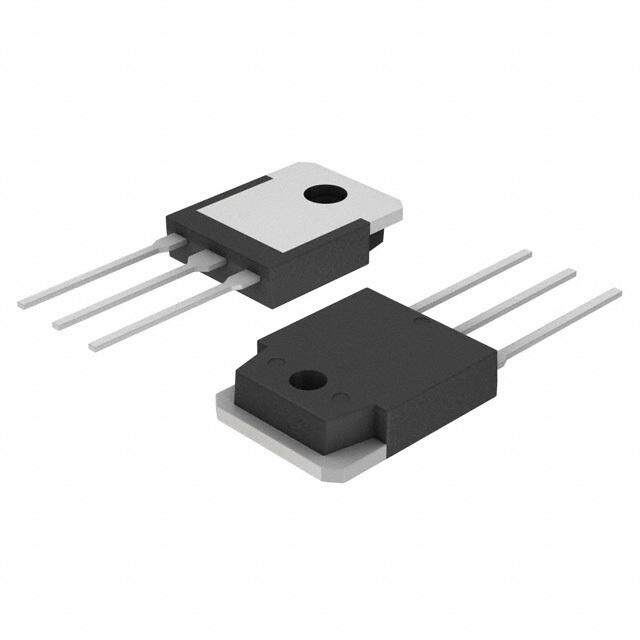ICGOO在线商城 > DNS10S0A0R06NFD
- 型号: DNS10S0A0R06NFD
- 制造商: DELTA PRODUCTS CORPORATION
- 库位|库存: xxxx|xxxx
- 要求:
| 数量阶梯 | 香港交货 | 国内含税 |
| +xxxx | $xxxx | ¥xxxx |
查看当月历史价格
查看今年历史价格
DNS10S0A0R06NFD产品简介:
ICGOO电子元器件商城为您提供DNS10S0A0R06NFD由DELTA PRODUCTS CORPORATION设计生产,在icgoo商城现货销售,并且可以通过原厂、代理商等渠道进行代购。 提供DNS10S0A0R06NFD价格参考¥51.70-¥51.70以及DELTA PRODUCTS CORPORATIONDNS10S0A0R06NFD封装/规格参数等产品信息。 你可以下载DNS10S0A0R06NFD参考资料、Datasheet数据手册功能说明书, 资料中有DNS10S0A0R06NFD详细功能的应用电路图电压和使用方法及教程。
| 参数 | 数值 |
| 产品目录 | |
| 描述 | CONV DC/DC 6A 8.3-14V NEG SIP |
| 产品分类 | DC DC Converters |
| 品牌 | Delta Electronics |
| 数据手册 | |
| 产品图片 | |
| 产品型号 | DNS10S0A0R06NFD |
| rohs | 无铅 / 符合限制有害物质指令(RoHS)规范要求 |
| 产品系列 | Delphi DNS |
| 产品目录页面 | |
| 其它名称 | 941-1011 |
| 功率(W)-制造系列 | 30W |
| 功率(W)-最大值 | 30W |
| 包装 | 托盘 |
| 大小/尺寸 | 1.00" 长 x 0.26" 宽 x 0.50" 高(25.4mm x 6.7mm x 12.7mm) |
| 安装类型 | 通孔 |
| 封装/外壳 | 6-SIP 模块 |
| 工作温度 | -40°C ~ 120°C |
| 效率 | 89.5% |
| 标准包装 | 45 |
| 特性 | 远程开/关,OCP,OTP,UVLO |
| 特色产品 | http://www.digikey.cn/product-highlights/cn/zh/delta-power-mgmt-acdc-industrial/3751 |
| 电压-输入(最大值) | 14V |
| 电压-输入(最小值) | 8.3V |
| 电压-输出1 | 0.75 ~ 5 V |
| 电压-输出2 | - |
| 电压-输出3 | - |
| 电压-隔离 | - |
| 电流-输出(最大值) | 6A |
| 类型 | 非隔离 PoL 模块 |
| 输出数 | 1 |

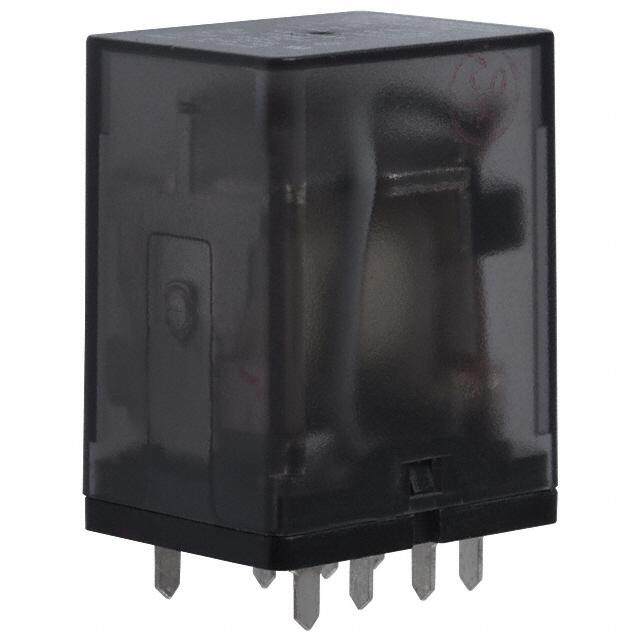
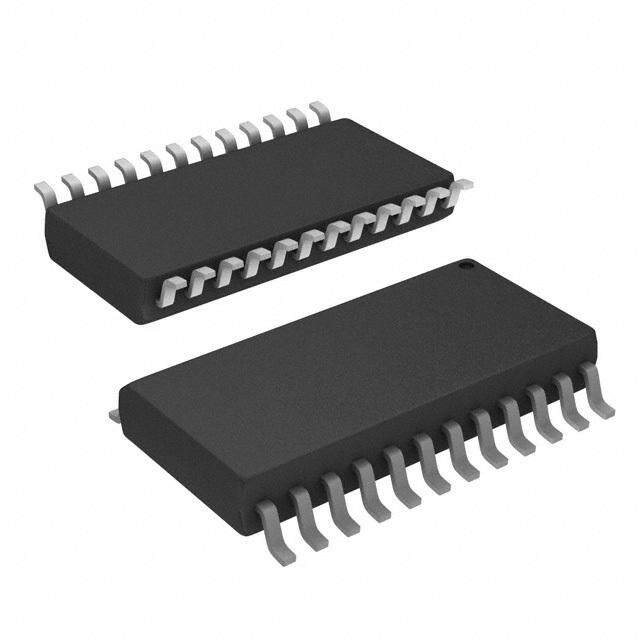

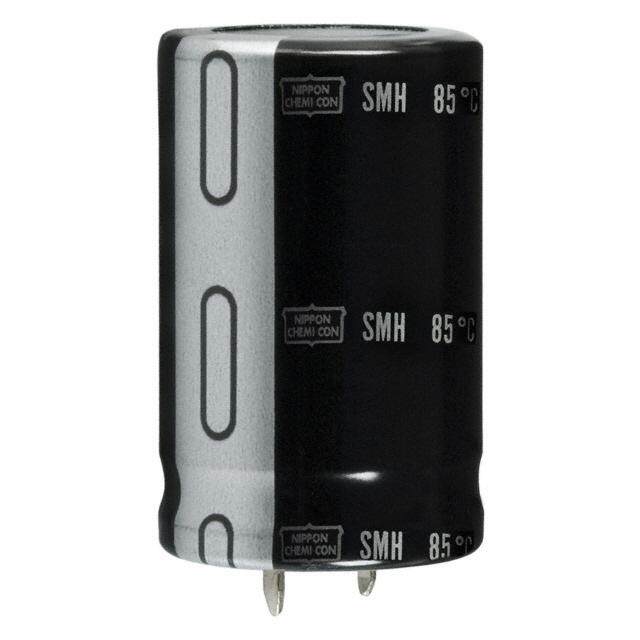
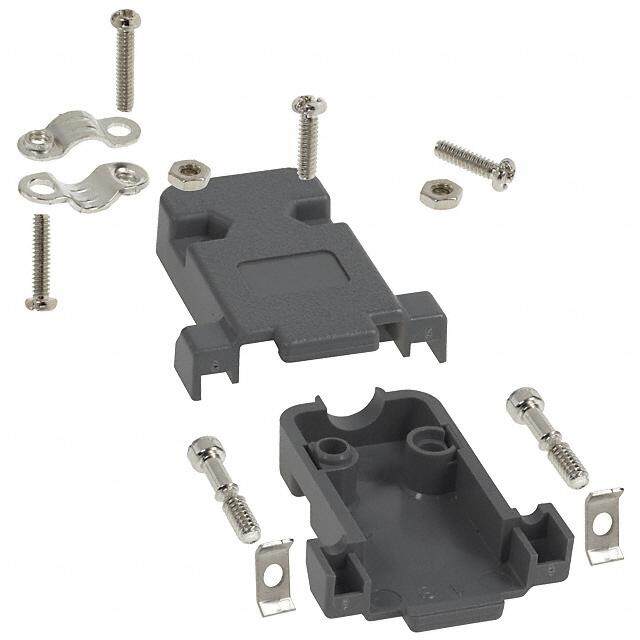

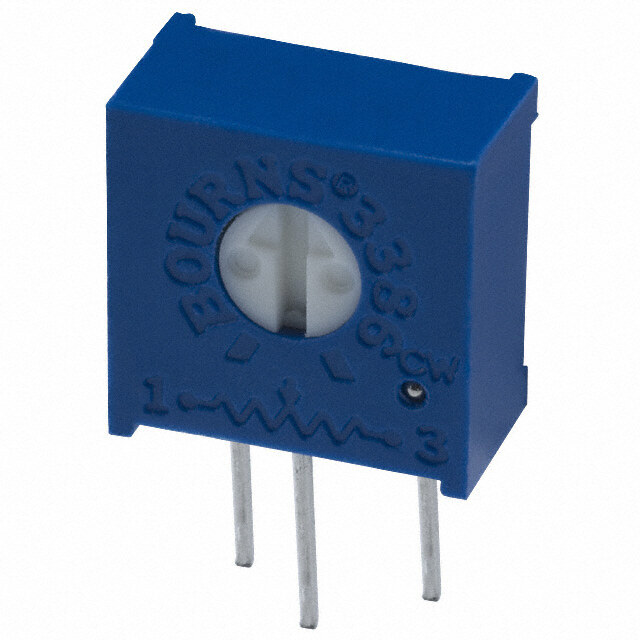
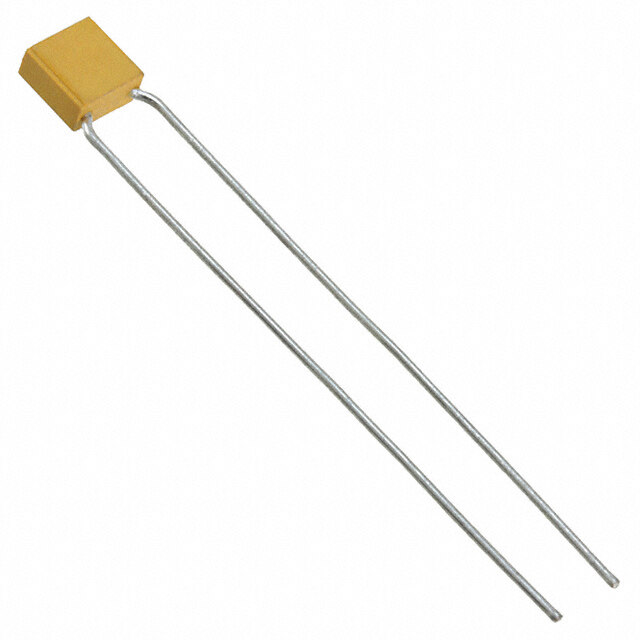

- 商务部:美国ITC正式对集成电路等产品启动337调查
- 曝三星4nm工艺存在良率问题 高通将骁龙8 Gen1或转产台积电
- 太阳诱电将投资9.5亿元在常州建新厂生产MLCC 预计2023年完工
- 英特尔发布欧洲新工厂建设计划 深化IDM 2.0 战略
- 台积电先进制程称霸业界 有大客户加持明年业绩稳了
- 达到5530亿美元!SIA预计今年全球半导体销售额将创下新高
- 英特尔拟将自动驾驶子公司Mobileye上市 估值或超500亿美元
- 三星加码芯片和SET,合并消费电子和移动部门,撤换高东真等 CEO
- 三星电子宣布重大人事变动 还合并消费电子和移动部门
- 海关总署:前11个月进口集成电路产品价值2.52万亿元 增长14.8%
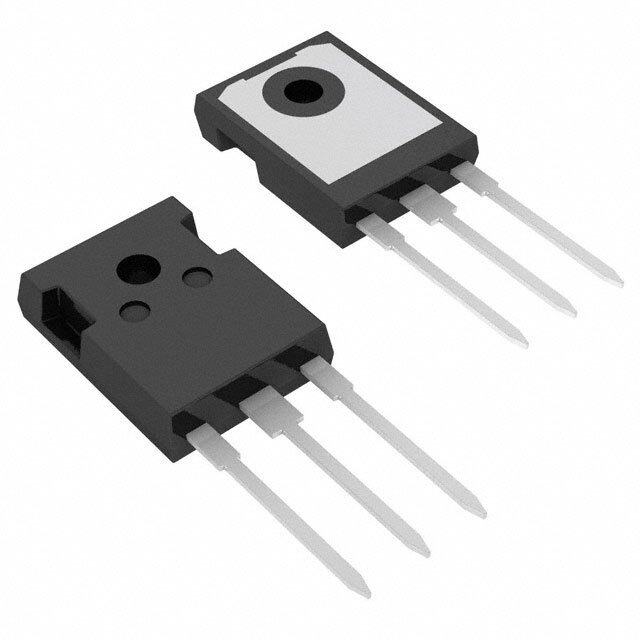
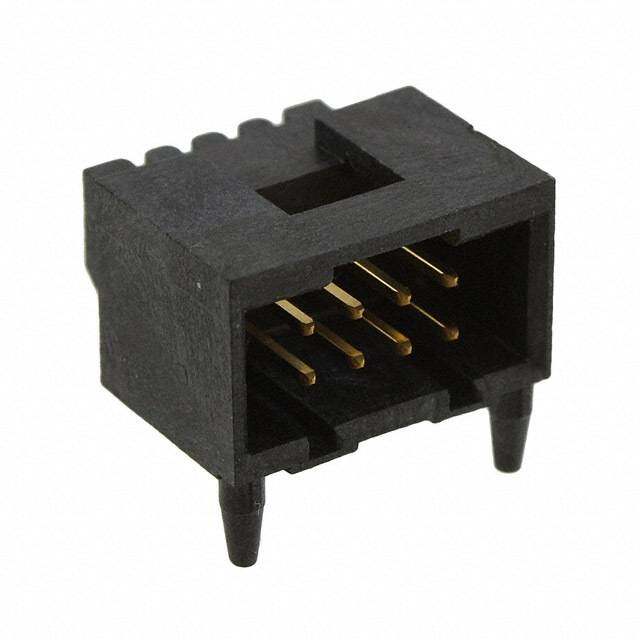
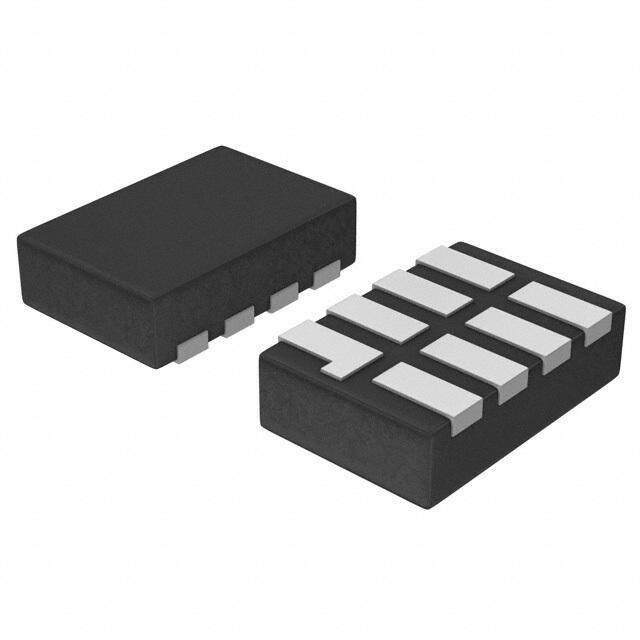
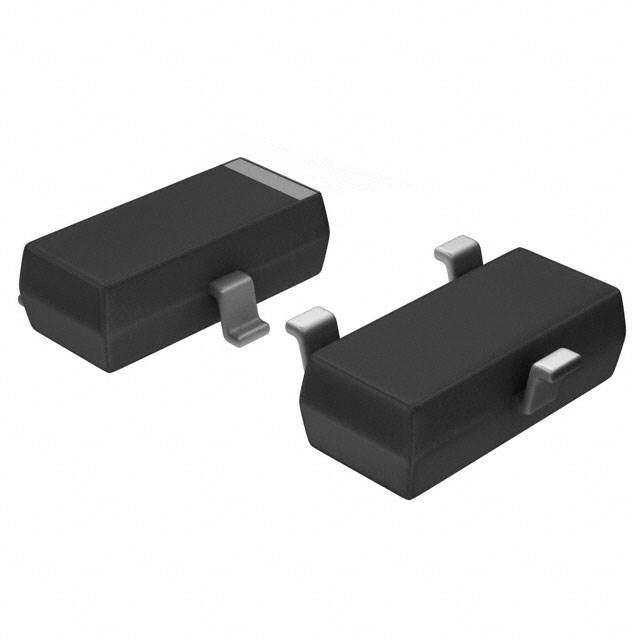
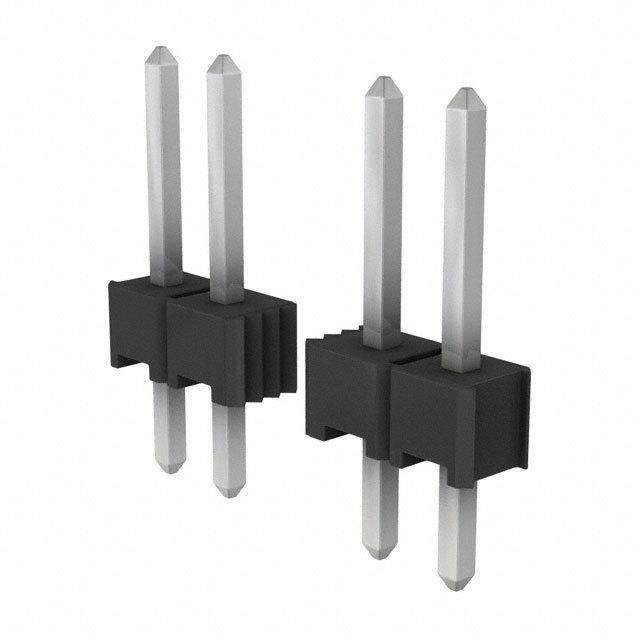
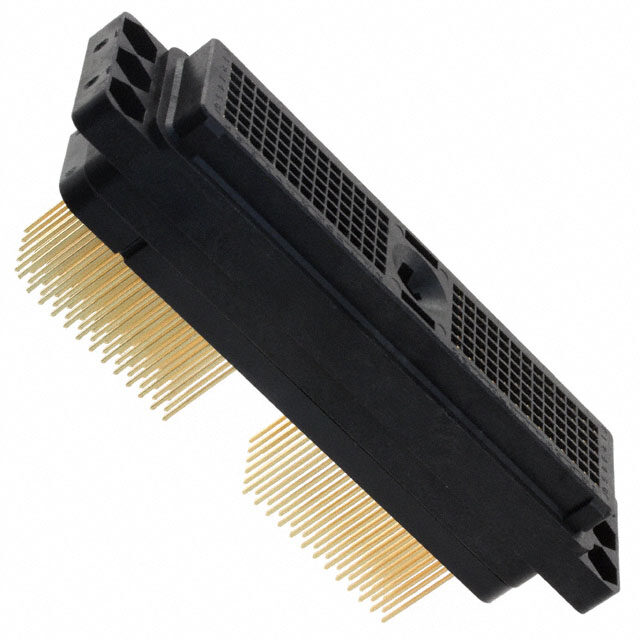
PDF Datasheet 数据手册内容提取
FEATURES High efficiency: 89.5%@ 12Vin, 3.3V/6A out Small size and low profile: (SIP) 25.4x 12.7x 6.67mm (1.00” x 0.50” x 0.26”) Standard footprint Voltage and resistor-based trim Pre-bias startup Output Voltage tracking No minimum load required Output voltage programmable from 0.75Vdc to 5Vdc via external resistor Fixed frequency operation (350KHz) Input UVLO, output OTP, OCP Remote ON/OFF ISO 9001, TL 9000, ISO 14001, QS 9000, OHSAS 18001 certified manufacturing facility UL/cUL 60950-1 (US & Canada) Recognized, and TUV (EN60950-1) certified. CE mark meets 73/23/EEC and 93/68/EEC directives Delphi DNS, Non-Isolated Point of Load DC/DC Power Modules: 8.3~14Vin, 0.75~5.0V/6A out OPTIONS The Delphi series DNS, 8.3~14V input, single output, non-isolated point of Negative on/off logic Tracking feature load DC/DC converters are the latest offering from a world leader in power SIP package systems technology and manufacturing ― Delta Electronics, Inc. The DNS series provides a programmable output voltage from 0.75V to 5.0V through an external trimming resistor. The DNS converters have flexible and programmable tracking and sequencing features to enable a variety of sequencing and tracking between several point of load power modules. This product family is available in a surface mount or SIP package and provides up to 6A of output current in an industry standard footprint and APPLICATIONS pinout. With creative design technology and optimization of component Telecom / DataCom placement, these converters possess outstanding electrical and thermal Distributed power architectures Servers and workstations performance and extremely high reliability under highly stressful operating LAN / WAN applications conditions. Data processing applications DATASHEET DS_DNS10SIP06_07182012
TECHNICAL SPECIFICATIONS (T = 25°C, airflow rate = 300 LFM, V = 8.3Vdc and 14Vdc, nominal Vout unless otherwise noted.) A in PARAMETER NOTES and CONDITIONS DNS10S0A0R06NFD Min. Typ. Max. Units ABSOLUTE MAXIMUM RATINGS Input Voltage (Continuous) 0 15 Vdc Tracking Voltage 0 Vin,max Vdc Operating Temperature -40 85 °C Storage Temperature -55 125 °C INPUT CHARACTERISTICS Operating Input Voltage Vo,set≦3.63Vdc 8.3 12 14 V Vo,set>3.63Vdc 8.3 12 13.2 V Input Under-Voltage Lockout Turn-On Voltage Threshold 7.9 V Turn-Off Voltage Threshold 7.8 V Maximum Input Current Vin=Vin,min to Vin,max, Io=Io,max 4.5 A No-Load Input Current 100 mA Off Converter Input Current 2 mA Inrush Transient Vin= Vin,min to Vin,max, Io=Io,min to Io,max 0.4 A2S Recommended Input Fuse 6 A OUTPUT CHARACTERISTICS Output Voltage Set Point Vin=12V, Io=Io,max -2.0 Vo,set +2.0 % Vo,set Output Voltage Adjustable Range 0.7525 5 V Output Voltage Regulation Over Line Vin=Vin,min to Vin,max 0.3 % Vo,set Over Load Io=Io,min to Io,max 0.4 % Vo,set Over Temperature Ta= -40℃ to 85℃ 0.4 % Vo,set Total Output Voltage Range Over sample load, line and temperature -2.5 +3.5 % Vo,set Output Voltage Ripple and Noise 5Hz to 20MHz bandwidth Peak-to-Peak Vin=min to max, Io=min to max1µF ceramic, 10µF Tan 50 75 mV RMS Vin=min to max, Io=min to max1µF ceramic, 10µF Tan 15 30 mV Output Current Range 0 6 A Output Voltage Over-shoot at Start-up Vout=3.3V 1 % Vo,set Output DC Current-Limit Inception 200 % Io Output Short-Circuit Current (Hiccup mode) Io,s/c 2 Adc DYNAMIC CHARACTERISTICS Dynamic Load Response 10µF Tan & 1µF ceramic load cap, 2.5A/µs, Vin=12V Positive Step Change in Output Current 50% Io, max to 100% Io, max 200 mVpk Negative Step Change in Output Current 100% Io, max to 50% Io, max 200 mVpk Settling Time (Vo< 10% Peak Deviation ) 25 µs Turn-On Transient Io=Io.max Start-Up Time, From On/Off Control Von/off, Vo=10% of Vo,set 3 ms Start-Up Time, From Input Vin=Vin,min, Vo=10% of Vo,set 3 ms Output Voltage Rise Time Time for Vo to rise from 10% to 90% of Vo,set 4 6 ms Output Capacitive Load Full load; ESR ≧1mΩ 1000 µF Full load; ESR ≧10mΩ 3000 µF EFFICIENCY Vo=0.75V Vin=12V, Io=Io,max 72.5 % Vo=1.2V Vin=12V, Io=Io,max 80.0 % Vo=1.5V Vin=12V, Io=Io,max 83.0 % Vo=1.8V Vin=12V, Io=Io,max 85.0 % Vo=2.5V Vin=12V, Io=Io,max 87.5 % Vo=3.3V Vin=12V, Io=Io,max 89.5 % Vo=5.0V Vin=12V, Io=Io,max 91.5 % FEATURE CHARACTERISTICS Switching Frequency 350 kHz ON/OFF Control, (Negative logic) Logic Low Voltage Module On, Von/off -0.2 0.3 V Logic High Voltage Module Off, Von/off 2.5 Vin,max V Logic Low Current Module On, Ion/off 10 uA Logic High Current Module Off, Ion/off 0.2 1 mA ON/OFF Control, (Positive Logic) Logic High Voltage Module On, Von/off Vin,max V Logic Low Voltage Module Off, Von/off -0.2 0.3 V Logic High Current Module On, Ion/off 10 uA Logic Low Current Module Off, Ion/off 0.2 1 mA Tracking Slew Rate Capability 0.1 2 V/msec Tracking Delay Time Delay from Vin.min to application of tracking voltage 10 ms Tracking Accuracy Power-up, subject to 2V/mS 100 200 mV Power-down, subject to 1V/mS 200 400 mV GENERAL SPECIFICATIONS MTBF Io=80%Io, max, Ta=25℃ 2.12 M hours Weight 4 grams Over-Temperature Shutdown Refer to Figure 30 for the measuring point 124 °C DS_DNS10SIP06_07182012 2
ELECTRICAL CHARACTERISTICS CURVES 85 88 83 86 81 79 84 EFFICIENCY(%) 777357 EFFICIENCY(%) 8802 71 78 69 8.3V 8.3V 12V 76 12V 67 14V 14V 65 74 1 2 3 4 5 6 1 2 3 4 5 6 LOAD (A) LOAD (A) Figure 1: Converter efficiency vs. output current Figure 2: Converter efficiency vs. output current (0.75V output voltage) (1.2V output voltage) 90 90 88 88 86 86 EFFICIENCY(%) 8824 EFFICIENCY(%) 8824 80 80 8.3V 8.3V 78 12V 78 12V 14V 14V 76 76 1 2 3 4 5 6 1 2 3 4 5 6 LOAD (A) LOAD (A) Figure 3: Converter efficiency vs. output current Figure 4: Converter efficiency vs. output current (1.5V output voltage) (1.8V output voltage) 92 94 92 90 90 88 EFFICIENCY(%) 8846 EFFICIENCY(%) 8868 84 8.3V 8.3V 82 12V 82 12V 14V 14V 80 80 1 2 3 4 5 6 1 2 3 4 5 6 LOAD (A) LOAD (A) Figure 5: Converter efficiency vs. output current Figure 6: Converter efficiency vs. output current (2.5V output voltage) (3.3V output voltage) DS_DNS10SIP06_07182012 3
ELECTRICAL CHARACTERISTICS CURVES 96 94 92 Y(%) 90 C N EFFICIE 88 86 8.3V 84 12V 13.2V 82 1 2 3 4 5 6 LOAD (A) Figure 7: Converter efficiency vs. output current (5.0V output voltage) Figure 8: Output ripple & noise at 12Vin, 2.5V/6A out Figure 9: Output ripple & noise at 12Vin, 5.0V/6A out V in Remote on/off V o V o Figure 10: Turn on delay time at 12vin, 5.0V/6A out Figure 11: Turn on delay time at Remote On/Off, 5.0V/6A out DS_DNS10SIP06_07182012 4
ELECTRICAL CHARACTERISTICS CURVES Remote on/off V o Figure 12: Turn on Using Remote On/Off with external capacitors (Co= 3000 µF), 5.0V/6A out Figure 13: Typical transient response to step load change at Figure 14: Typical transient response to step load change at 2.5A/μS from 100% to 50% of Io, max at 12Vin, 2.5A/μS from 50% to 100% of Io, max at 12Vin, 5.0V out (Cout = 1uF ceramic, 10μF tantalum) 5.0V out (Cout = 1uF ceramic, 10μF tantalum) Io:2A/DIV Io:2A/DIV Figure 15: Output short circuit current 12Vin, 0.75Vout Figure 16: Turn on with Prebias 12Vin, 5V/0A out, Vbias (5A/div) =3.3Vdc DS_DNS10SIP06_07182012 5
TEST CONFIGURATIONS DESIGN CONSIDERATIONS TO OSCILLOSCOPE Input Source Impedance L To maintain low-noise and ripple at the input voltage, it is V(+) I critical to use low ESR capacitors at the input to the module. Figure 20 shows the input ripple voltage BATTERY 2 100uF (mVp-p) for various output models using 2x47 uF low Tantalum ESR tantalum capacitors (SANYO P/N:16TQC47M, 47uF/16V or equivalent) and 2x22 uF very low ESR V(-) I ceramic capacitors (TDK P/N:C3225X7S1C226MT, Note: Input reflected-ripple current is measured with a 22uF/16V or equivalent). simulated source inductance. Current is measured at the input of the module. The input capacitance should be able to handle an AC ripple current of at least: Figure 17: Input reflected-ripple test setup IrmsIout Vout1Vout Arms COPPER STRIP Vin Vin Vo 300 10uF 1uF SCOPE Resistive tantalumceramic Load 250 GND p) 200 p- V m e ( 150 g a Note: Use a 10μF tantalum and 1μF capacitor. Scope olt V measurement should be made using a BNC e 100 pl connector. Rip Tantalum put 50 Ceramic n Figure 18: Peak-peak output noise and startup transient I measurement test setup 0 0 1 2 3 4 5 6 CONTACT AND Output Voltage (Vdc) DISTRIBUTION LOSSES VI Vo I Io Figure 20: Input ripple voltage for various Output models, SUPPLY LOAD Io = 6A (Cin = 2x47uF tantalum capacitors and GND 2x22uF ceramic capacitors at the input) CONTACT RESISTANCE Figure 19: Output voltage and efficiency measurement test setup Note: All measurements are taken at the module terminals. When the module is not soldered (via socket), place Kelvin connections at module terminals to avoid measurement errors due to contact resistance. VoIo ( )100 % ViIi D S_DNS10SIP06_07182012 6
DESIGN CONSIDERATIONS (CON.) FEATURES DESCRIPTIONS The power module should be connected to a low Remote On/Off ac-impedance input source. Highly inductive source impedances can affect the stability of the module. An The DNS series power modules have an On/Off pin for input capacitance must be placed close to the modules remote On/Off operation. Both positive and negative input pins to filter ripple current and ensure module On/Off logic options are available in the DNS series stability in the presence of inductive traces that supply power modules. the input voltage to the module. For positive logic module, connect an open collector Safety Considerations (NPN) transistor or open drain (N channel) MOSFET between the On/Off pin and the GND pin (see figure 21). For safety-agency approval the power module must be Positive logic On/Off signal turns the module ON during installed in compliance with the spacing and separation the logic high and turns the module OFF during the logic requirements of the end-use safety agency standards. low. When the positive On/Off function is not used, leave the pin floating or tie to Vin (module will be On). For the converter output to be considered meeting the requirements of safety extra-low voltage (SELV), the For negative logic module, the On/Off pin is pulled high input must meet SELV requirements. The power module with an external pull-up resistor (see figure 22) Negative has extra-low voltage (ELV) outputs when all inputs are logic On/Off signal turns the module OFF during logic ELV. high and turns the module ON during logic low. If the negative On/Off function is not used, leave the pin The input to these units is to be provided with a floating or tie to GND. (module will be On) maximum 6A of glass type fast-acting fuse in the ungrounded lead. Vin Vo ION/OFF On/Off RL GND Figure 21: Positive remote On/Off implementation Vin Vo Rpull-up ION/OFF On/Off RL GND Figure 22: Negative remote On/Off implementation Over-Current Protection To provide protection in an output over load fault condition, the unit is equipped with internal over-current protection. When the over-current protection is triggered, the unit enters hiccup mode. The units operate normally once the fault condition is removed. DS_DNS10SIP06_07182012 7
FEATURES DESCRIPTIONS (CON.) For example, to program the output voltage of the DNS module to 3.3Vdc, Rtrim is calculated as follows: Over-Temperature Protection The over-temperature protection consists of circuitry 10500 Rtrim 1000 that provides protection from thermal damage. If the 2.5475 temperature exceeds the over-temperature threshold Rtrim = 3.122 kΩ the module will shut down. The module will try to restart after shutdown. If the over-temperature condition still exists during restart, the module will shut down again. DNS can also be programmed by applying a voltage This restart trial will continue until the temperature is between the TRIM and GND pins (Figure 24). The within specification. following equation can be used to determine the value of Vtrim needed for a desired output voltage Vo: Output Voltage Programming Vtrim0.7Vo0.75250.0667 The output voltage of the DNS can be programmed to any voltage between 0.75Vdc and 5.0Vdc by connecting Vtrim is the external voltage in V one resistor (shown as Rtrim in Figure 23) between the Vo is the desired output voltage TRIM and GND pins of the module. Without this external resistor, the output voltage of the module is 0.7525 Vdc. For example, to program the output voltage of a DNS To calculate the value of the resistor Rtrim for a particular module to 3.3 Vdc, Vtrim is calculated as follows output voltage Vo, please use the following equation: 10500 Vtrim0.72.54750.0667 Rtrim 1000 Vo 0.7525 Vtrim = 0.530V Rtrim is the external resistor in Ω Vo is the desired output voltage Figure 23: Circuit configuration for programming output voltage using an external resistor Figure 24: Circuit Configuration for programming output voltage using external voltage source DS_DNS10SIP06_07182012 8
FEATURE DESCRIPTIONS (CON.) The amount of power delivered by the module is the Table 1 provides Rtrim values required for some common voltage at the output terminals multiplied by the output output voltages, while Table 2 provides value of external current. When using the trim feature, the output voltage voltage source, Vtrim, for the same common output of the module can be increased, which at the same voltages. By using a 1% tolerance trim resistor, set point output current would increase the power output of the tolerance of ±2% can be achieved as specified in the module. Care should be taken to ensure that the electrical specification. maximum output power of the module must not exceed the maximum rated power (Vo.set x Io.max ≤ P max). Table 1 Voltage Margining VO (V) Rtrim (KΩ) 0.7525 Open Output voltage margining can be implemented in the 1.2 22.464 1.5 13.047 DNS modules by connecting a resistor, Rmargin-up, from the 1.8 9.024 Trim pin to the ground pin for margining-up the output 2.5 5.009 voltage and by connecting a resistor, R , from the margin-down 3.3 3.122 Trim pin to the output pin for margining-down. Figure 25 5.0 1.472 shows the circuit configuration for output voltage margining. If unused, leave the trim pin unconnected. A Table 2 calculation tool is available from the evaluation VO (V) Vtrim (V) procedure, which computes the values of Rmargin-up and 0.7525 Open R for a specific output voltage and margin margin-down 1.2 0.670 percentage. 1.5 0.650 1.8 0.630 2.5 0.583 Vin Vo 3.3 0.530 Rmargin-down 5.0 0.4167 Q1 On/Off Trim Rmargin-up Rtrim Q2 GND Figure 25: Circuit configuration for output voltage margining Voltage Tracking The DNS family was designed for applications that have output voltage tracking requirements during power-up and power-down. The devices have a TRACK pin to implement three types of tracking method: sequential start-up, simultaneous and ratio-metric. TRACK simplifies the task of supply voltage tracking in a power system by enabling modules to track each other, or any external voltage, during power-up and power-down. By connecting multiple modules together, customers can get multiple modules to track their output voltages to the voltage applied on the TRACK pin. D S_DNS10SIP06_07182012 9
FEATURE DESCRIPTIONS (CON.) The output voltage tracking feature (Figure 26 to Figure PS1 PS1 28) is achieved according to the different external connections. If the tracking feature is not used, the +△V PS2 PS2 TRACK pin of the module can be left unconnected or tied to Vin. For proper voltage tracking, input voltage of the tracking power module must be applied in advance, and the remote on/off pin has to be in turn-on status. (Negative Figure 28: Ratio-metric logic: Tied to GND or unconnected. Positive logic: Tied to Vin or unconnected) PS1 PS1 PS2 PS2 Figure 26: Sequential PS1 PS1 PS2 PS2 Figure 27: Simultaneous D S_ D N S 1 0 S IP 0 6 _ 07 1 8 2 01 2 10
FEATURE DESCRIPTIONS (CON.) Sequential Start-up Ratio-Metric Ratio–metric (Figure 28) is implemented by placing the Sequential start-up (Figure 26) is implemented by placing voltage divider on the TRACK pin that comprise R1 and an On/Off control circuit between Vo and the On/Off pin PS1 R2, to create a proportional voltage with Vo to the PS1 of PS2. Track pin of PS2. PS1 PS2 For Ratio-Metric applications that need the outputs of Vin Vin PS1 and PS2 reach the regulation set point at the same time. VoPS1 R3 VoPS2 On/Off R1 The following equation can be used to calculate the On/Off Q1 value of R1 and R2. R2 C1 The suggested value of R2 is 10kΩ. VO,PS2 R2 VO,PS1 R1R2 PS1 PS2 Simultaneous Vin Vin VoPS1 VoPS2 Simultaneous tracking (Figure 27) is implemented by R1 using the TRACK pin. The objective is to minimize the TRACK R2 voltage difference between the power supply outputs On/Off On/Off during power up and down. The simultaneous tracking can be accomplished by The high for positive logic The low for negative logic connecting Vo to the TRACK pin of PS2. Please note PS1 the voltage apply to TRACK pin needs to always higher than the Vo set point voltage. PS2 PS1 PS2 Vin Vin VoPS1 VoPS2 TRACK On/Off On/Off D S_DNS10SIP06_07182012 11
THERMAL CONSIDERATIONS Thermal management is an important part of the system design. To ensure proper, reliable operation, sufficient cooling of the power module is needed over the entire temperature range of the module. Convection cooling is usually the dominant mode of heat transfer. Hence, the choice of equipment to characterize the thermal performance of the power module is a wind tunnel. Thermal Testing Setup Delta’s DC/DC power modules are characterized in heated vertical wind tunnels that simulate the thermal environments encountered in most electronics equipment. This type of equipment commonly uses vertically mounted circuit cards in cabinet racks in which the power modules are mounted. The following figure shows the wind tunnel characterization setup. The power module is mounted on a test PWB and is vertically positioned within the wind tunnel. The height of this fan duct is constantly kept at 25.4mm (1’’). Thermal Derating Heat can be removed by increasing airflow over the module. To enhance system reliability, the power module should always be operated below the maximum operating temperature. If the temperature exceeds the maximum module temperature, reliability of the unit may be affected. FANCING PWB PWB MODULE AIR VELOCITY AND AMBIENT TEMPERATURE 0") SURED BELOW 2.0 THE MODULE 8( 0. 5 AIR FLOW Note: Wind Tunnel Test Setup Figure Dimensions are in millimeters and (Inches) Figure 29: Wind tunnel test setup D S_DNS10SIP06_07182012 12
THERMAL CURVES DNS10S0A0R06(Standard) Output Current vs. Ambient Temperature and Air Velocity Output Current(A) @ Vin = 12V, Vo = 0.75V (Either Orientation) 7 6 5 4 CoNnavteucratioln 200LFM 400LFM 3 100LFM 300LFM 500LFM 2 1 0 30 35 40 45 50 55 60 65 70 75Ambient Te8m0perature (8℃5) Figure 30: Temperature measurement location Figure 33: DNS0A0R06(Standard) Output current vs. ambient The allowed maximum hot spot temperature is defined at 120℃ temperature and air velocity@ Vin=12V, Vout=0.75V (Either Orientation) DNS10S0A0R06(Standard) Output Current vs. Ambient Temperature and Air Velocity Output Current(A) @ Vin = 12V, Vo = 5.0V (Either Orientation) 7 6 5 Natural Convection 4 100LFM 300LFM 500LFM 3 200LFM 400LFM 2 600LFM 1 0 30 35 40 45 50 55 60 65 70 75 80 85 Ambient Temperature (℃) Figure 31:DNS0A0R06(Standard) Output current vs. ambient temperature and air velocity@ Vin=12V, Vout=5.0V (Either Orientation) DNS10S0A0R06(Standard) Output Current vs. Ambient Temperature and Air Velocity Output Current(A) @ Vin = 12V, Vo = 1.8V (Either Orientation) 7 6 5 Natural Convection 200LFM 4 100LFM 300LFM 3 400LFM 2 500LFM 1 0 30 35 40 45 50 55 60 65 70 75 80 85 Ambient Temperature (℃) Figure 32: DNS0A0R06(Standard)Output current vs. ambient temperature and air velocity@ Vin=12V, Vout=1.8V (Either Orientation) DS_DNS10SIP06_07182012 13
MECHANICAL DRAWING SMD PACKAGE (OPTIONAL) SIP PACKAGE DS_DNS10SIP06_07182012 14
PART NUMBERING SYSTEM DNS 10 S 0A0 R 06 P F D Product Numbers Output Package Output On/Off Input Voltage Option Code Series of Outputs Voltage Type Current logic DNS - 6A 04 - 2.8V ~ 5.5V S - Single 0A0 - R - SIP 06 - 6A N- negative F- RoHS 6/6 D - Standard Function DNM -10A 10 - 8.3V ~14V Programmable S - SMD P- positive (Lead Free) DNL - 16A MODEL LIST Output Efficiency Model Name Packaging Input Voltage Output Voltage On/Off logic Current 12Vin @ 100% load DNS10S0A0R06NFD SIP 8.3V ~ 14V 0.75V ~ 5.0V 6A Negative 89.5% (3.3V) DNS10S0A0R06PFD SIP 8.3V ~ 14V 0.75V ~ 5.0V 6A Positive 89.5% (3.3V) DNS10S0A0S06NFD SMD 8.3V ~ 14V 0.75V ~ 5.0V 6A Negative 89.5% (3.3V) DNS10S0A0S06PFD SMD 8.3V ~ 14V 0.75V ~ 5.0V 6A Positive 89.5% (3.3V) CONTACT: www.deltaww.com/dcdc USA: Europe: Asia & the rest of world: Telephone: Telephone: +886 3 4526107 ext 6220-6224 Phone: +31-20-655-0967 East Coast: 978-656-399388 Fax: +886 3 4513485 Fax: +31-20-655-0999 West Coast: 510-668-5100 Email: DCDC@delta.com.tw Email: DCDC@delta-es.com Fax: (978) 656 3964 Email: DCDC@delta-corp.com WARRANTY Delta offers a two (2) year limited warranty. Complete warranty information is listed on our web site or is available upon request from Delta. Information furnished by Delta is believed to be accurate and reliable. However, no responsibility is assumed by Delta for its use, nor for any infringements of patents or other rights of third parties, which may result from its use. No license is granted by implication or otherwise under DS_DNS10SIP06_07182012 15
Mouser Electronics Authorized Distributor Click to View Pricing, Inventory, Delivery & Lifecycle Information: D elta Electronics: DNS10S0A0R06NFD DNS10S0A0R06PFD

 Datasheet下载
Datasheet下载
